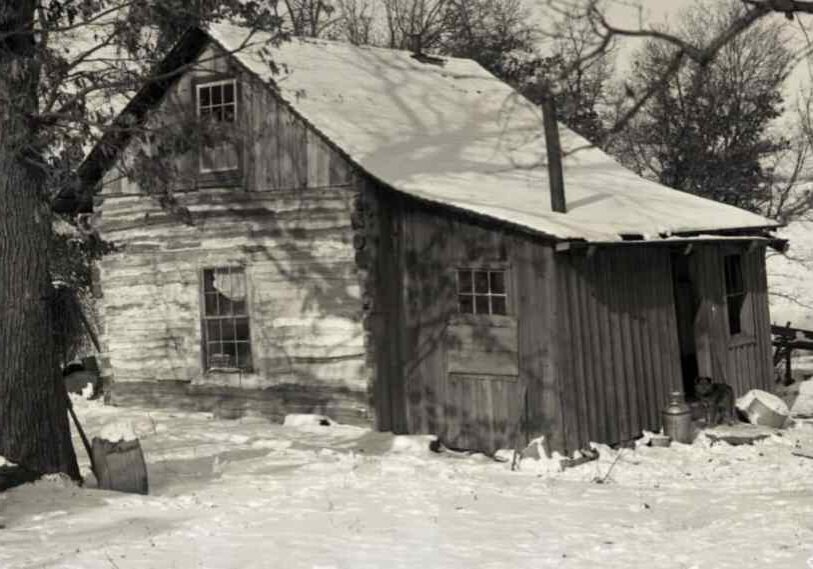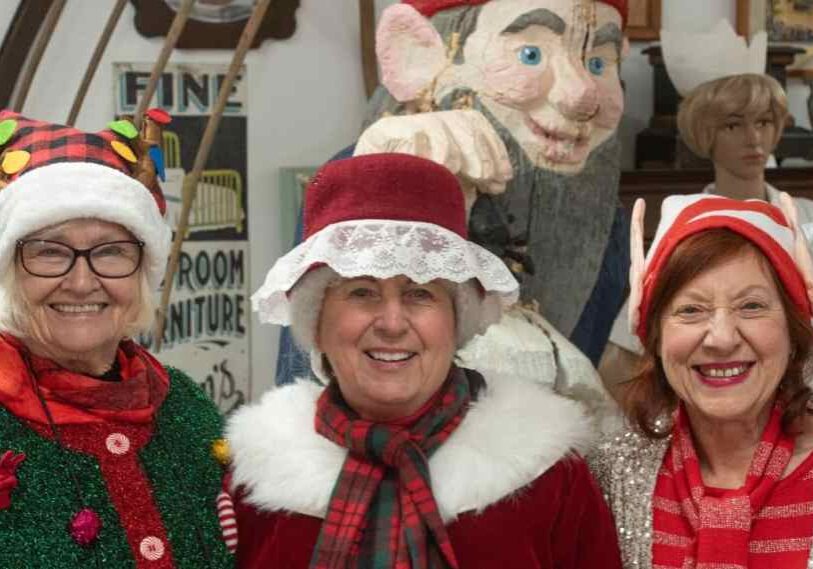In Rural Minnesota, this Resident Ensemble Model Thrives
2025 marks the Commonweal Theatre’s 37th year in Southeast Minnesota

LANESBORO—Five years since the pandemic began, many professional theatre companies still suffer from long COVID. One presenter at a 2023 panel for American Theatre Critic Association’s annual meeting in New York City compared the financial status of non-profit theatre to the coyote from Looney Tunes still moving its legs after running off the cliff.
In the wake of lower attendance, rising costs, budget shortfalls and diminished support from patrons, flustered theatre communities impatiently wonder if there is another way, a different economic model that might somehow revive high-quality, non-pandering, community-centered, professional theatre.
Or will we all simply soon stop churning our legs only to come crashing to the rock-bottom valley below?
A hidebound approach
Nestled in the beautiful bluffs of Southeastern Minnesota, one little theatre company offers an alternative. Founded in 1989, Lanesboro’s Commonweal Theatre Company has successfully produced professional theatre in an aggressively rural setting for thirty-six years.
Visionary leadership balanced with stalwart support from its tiny community has enabled the company to evolve from a shoestring summer stock founded by the local arts council into a thriving independent 501(c)(3) resident artist collective employing fifteen full-time theatre artists year-round.
Honoring its mission “to enrich the common good through actor-based storytelling that is both transcendent and relevant,” the Commonweal Theatre Company defies the conventional wisdom that viable commercial theatre must either be urban and elitist or generic and pacifying.
While this hidden jewel of rural America may not be easy to replicate elsewhere, the rest of the professional theatre community should take note of this little theatre that could.
Producing artistic director Hal Cropp began his Commonweal journey near the beginning, originally brought to town as an actor by theatre founder Eric Lorentz Bunge during that fourth summer of 1992.
A warm and distinguished gentlemen, Cropp waxed philosophical discussing his more than three decades making art in this tiny Minnesota village: “Early in my career, I had a chance to work with Sydney Walker, a former Broadway actor and an American Conservatory Theater (ACT)/San Francisco stalwart, who told me all he wanted was to have a life in the theatre. A sentiment I took to heart.”
Cropp continued, “So when the Commonweal came calling, it was not a difficult decision to see that here could be truly a life in the theatre, with a house, a child, and significant relationships on both the personal and professional level.”
A rare double threat, Cropp holds an MFA in acting and an MBA. As quickly became apparent from our first conversation in a local brewery where everybody knew his name, Cropp’s skilled artistry and marketing savvy played a key role in the Commonweal Theatre Company’s long-term growth.
Among duties too numerous to mention, Cropp acts in multiple shows each season and occasionally directs; he has also guided several successful development campaigns, including the construction of a delightfully intimate $3.5 million, 200-seat thrust theatre that has been the company’s home since 2007.
From a modest starting budget of $20,000 in 1989, the current budget now nears $1 million with annual attendance growing as high as 21,000. Outside of the local public school system, the Commonweal Theatre is the largest employer in town.

Director Amanda Rafuse leads the “King Lear” ensemble in a discussion about the play at Lanesboro’s Commonweal Theatre. (Photo by Leon van Eck)
The artist/administrator model
In keeping with Cropp’s unique dual focus, every company member I interviewed during my five days in Lanesboro offered the same answer when asked to describe the secret of their success: the artist/administrator model. Within this “actor-based” theatre, every actor in the company also contributes to at least one of five areas: marketing, development, administration, production, or leadership.
Twenty-five-year ensemble member Adrienne Sweeney exemplifies this model. In addition to directing this season’s lovely production of Josh Tobiessen’s Long Star Spirits, Sweeney’s title also includes actor/director of external communications/associate artistic director. “The artist/administrator model works for actors because we don’t need day jobs,” Sweeney shared. “Our day jobs are at the theatre.”
When I asked Cropp how he finds theatre artists with the necessary administrative skills, he wryly stated: “Actors naturally make good marketers.”
Within this model, a strong sense of collaboration pervades. “Our work here is not siloed,” Sweeney passionately interjected. “We wear all the hats. When necessary, we combine our skills to fill the needs of company.”
For her part, longtime company member Stela Burdt’s official title reads: actor/music director/director of administration. Reflecting on her over twenty nonconsecutive years with the company, Burdt further extolled the synergy within the ensemble:
“One of the cast members in Lone Star Spirits (Jeremy van Meter) is the director of development. He’s working on grants and fundraising and donors. Well, he’s in tech rehearsal right now. He’s still checking on things, of course, but if something big were to come up, others who are not as involved in the show, me included, will step up.”
A rebirth of the resident ensemble
While the actor/administrator model explains much of the Commonweal’s economic resilience, other countercultural qualities make the company unique. By 1998, the company fully adopted a “resident ensemble” approach, producing five shows per season in repertoire over ten months.
According to Cropp, three interconnected and essential precepts guide their application of the resident ensemble philosophy: exemplary work, patron relations, and an embrace of the European conservatory tradition.

Lizzy Andretta, Georgia Doolittle and Cody Beyer in the Commonweal’ Theatre’s 2025 production of “Lone Star Spirits” directed by Adrienne Sweeney with scenic design by Bill Duwell, costume design by Jason Resler. lighting design by Paul Epton. props design by Sara Hueser. And scenic dressing by Synth Manuel. (Photo by Sarah Peterson, Peterson Creative Photography and Design)
Regarding the first precept, Cropp made clear that “the artistic quality has to be the primary consideration.” Amazingly, the exemplary work extends beyond easy to sell crowd-pleasers, the bread and butter of many theatres. While typical seasons certainly contain some lighter fare, this little theatre in a town founded by Scandinavian immigrants audaciously produced the challenging works of Henrik Ibsen for twenty consecutive seasons.
These brave if melancholy productions may not have sold as well as French farce, but they earned the Commonweal Theatre the prestigious Ibsen Award from then Norwegian government. For context, a previous recipient of this award was Peter Brook. (Presented in 2008 for his significant contributions to theatre, Brook was the first recipient of the International Ibsen Award – an award that recognizes individuals or organizations that have brought new artistic dimensions to the world of drama).
Today, the tradition of tackling diverse and challenging work continues. The current 2025 season includes a spicy range of genres, starting with Lauren Gundersen’s two-hander feminist drama The Half Life of Marie Curie, to Josh Tobiessen’s poignant supernatural dramady Lone Star Spirits, to Paul Slade Smith’s screwball comedy The Angel Next Door, to Shakespeare’s King Lear, in which Cropp will play the demanding title role. Mark Shanahan’s holiday mystery, The Sherlock Carol completes the season as the annual Christmas show.
Remarkably, the entire resident ensemble helps select their diverse seasons, sticking around Lanesboro in January and February when both the theatre and the winter sky go dark. During these months, the resident ensemble participates in a “Book Club” curated by the company’s literary manager (and actor/marketing associate) Josiah Laubenstein. They discuss dozens of plays for consideration for the next year’s season.
Musing on the season selection, Burdt reflected, “Not everyone will love every play we select, but you can be sure that at least one company member is passionate about bringing it to our audience. That passion shows in the work.”

Laurie Roberts in the Commonweal Theatre’s production of “The Half-Life of Marie Curie” by Lauren Gunderson,. Directed by Jaclyn June Johnson. Scenic design by Greg Vanselow. Costume design by Kimberly K. Murphy. Lighting design by Paul Epton. Projection design by Alex Schlesinger. (Photo by Sarah Peterson, Peterson Creative Photography and Design)
The Commonweal Theatre’s deep focus on patron relations goes beyond providing exemplary quality and into a very Minnesotan virtue of hospitality. “We want everyone who walks through that door to feel like this is their theatre,” stated Cropp.
Indeed, their innovatively designed lobby invites community; it’s filled with theatre-inspired paintings and interactive sculptures that the theatre commissioned local artists to produce.
And the audience is fiercely loyal. In addition to massive support from the greater Lanesboro community, season ticket holders from Rochester and Winona religiously trek forty miles or more for every show.
Lanesboro also draws tourists who stay in the town’s plethora of bed and breakfasts to fish or canoe the scenic Root River or to explore the area’s bike trails. Cropp estimates that these tourists account for about 15 percent of the total audience. Tellingly, the vast majority of dedicated patrons live nearby; many know the company members by name.
Regarding the sense of community ownership, Sweeney joked about the “fifteen-minute walk” to the post office, which sits a block away from the theatre. With a clear sense of gratitude, she recounted, “As soon as we step out of the door, patrons grab us. They want to talk about the show they saw last night.”
In a similar vein, Burdt teared up reflecting on one community member’s response to her recent performance in The Half Life of Marie Curie. This long-time patron in her seventies sought out Burdt after seeing Gundersen’s empowering drama for the second time. Reflecting on the impact, she professed, “It made me realize that I am worthy.”
If a hired-gun mentality dominates most professional theatre in the United States, the Commonweal’s embrace of the European conservatory tradition may be the most exceptional byproduct of its resident ensemble approach.
Reflecting on what attracted him to Lanesboro seven years ago, Laubenstein stated, “Most acting jobs are mercenary. The opportunity for an actor to work year-round with the same people is so unusual.” He added, “I believe this sense of ‘ensemble’ shows in the quality of the work.”
According to Cropp, a triad of “creating, learning, and teaching” guide the Commonweal’s conservatory-inspired approach. Predictably, a focus on educating the community translates into many areas, including offering matinees to nearby schools. These shows regularly include talk-back sessions, as well as sending company members into local classrooms in advance.
For years, a Minnesota arts grant also funded tours of the company’s signature Ibsen productions to theatres and community centers across the Scandinavian-populated state.
However, from my vantage as a theatre educator, the most thrilling component of Commonweal’s conservatory approach focuses inward. The theatre offers a ten-month paid apprentice program offered to recent graduates of college theatre programs.
In support of this program, the company routinely engages in in-house educational opportunities, including bringing in outside artists to conduct workshops. Tellingly, these workshops in areas such as the Micheal Chekhov technique cater not just to the apprentices but to the entire resident ensemble.
The company also maintains a culture in which resident artists train and teach each other, engaging in thoughtful forms of assessment including a formalized “rehearsal look-back” instituted to keep long-running shows fresh.
During my visit, I attended a first dress rehearsal of Lone Star Spirits. I was struck that nearly every company member and apprentice was present at this evening rehearsal, either onstage, backstage or carefully observing from the audience. More than a place to create good theatre, this resident ensemble learns from and teaches each other.
—Pulitzer Prize-winning author Sinclair Lewis writing about Lanesboro, Minnesota
Most of all, the resident ensemble model contributes to the Commonweal’s revered status within Lanesboro. By 1998, when the influx of tourism made local rentals too pricey for company members, Cropp successfully raised funding to build the Dixon House, a spacious dormitory that houses company members rent free in what might best be described as well-equipped artist commune.
While most resident ensemble members start in the Dixon House, longer serving company members eventually buy homes in Lanesboro; they send their children to the local schools; they serve on community boards. Indeed, the morning I interviewed Burdt, she had just returned from volunteering on behalf of the Commonweal for the local Meals on Wheels program.
As Cropp summarized, “We are not just in the community, we are of it.”
Conclusions
For the past two decades, I have taught and produced theatre at a liberal arts college in a small town cleverly hidden in rural northwest Iowa. This unexpected life has made me a passionate advocate for quality theatre in rural settings. Many of my best theatre majors hail from even smaller towns.

Cody Beyer, Laurie Roberts, Amanda Byars, Catherine Glynn, Tim Sailer, David Hennessey, Josiah Laubenstein, Eric Bunge, and Hal Cropp in William Shakespeare’s “King Lear.” The production is directed and adapted by Amanda Rafuse with scenic design by Synth Manuel, costume design by Kimberly K. Murphy, lighting design by Alex Schlesinger, and production stage manager Isabella Anastasia Leigh; jewelry design is by Crown Trout Jewelers. (Photo by Michael Seiler, Eye Prize Marketing)
Understandably, the perception exists that a life in the professional theatre requires a population of several hundred thousand souls. Therefore, to pursue their dreams and use their gifts, most of the talented theatre artists from my program relocate from their beloved rural communities to places like Chicago, Minneapolis, Seattle or New York.
While this course of action will no doubt continue, the Commonweal shows a different path for thriving theatre in rural America, a model with the potential to inspire similar resident ensemble companies.
But such radical change will not come easily. The Commonweal’s model relies on virtues rarely practiced in theatre education or professional theatre. Simply put, artists can no more be singular creatures.
Laubenstein, who holds an MFA in acting, extolled his BA in theatre from tiny Concordia University in St. Paul, Minn. as foundational to his current success: “I am a big, big fan of the liberal arts model rather than the BFA. With Commonweal, it’s all hands on deck.”
With zeal, Laubenstein continued, “When young, it’s easy to fall into the trap of ‘I only want to be an actor.’ Liberal arts programs are really good at giving you preparation you need to succeed.”
Likewise, when asked about her over twenty years of success with the Commonweal, Burdt credited her BA in theatre from Luther College, another small liberal arts college in Iowa. “I learned about acting, sure,” Burdt offered, “but you get such a wide knowledge with a BA. You learn how to learn.”
It follows that efforts to replicate the Commonweal Theatre Company’s countercultural success will require ensemble members who are good artists and good learners. The artist/administrator model requires artists who aggressively and humbly embrace other roles, artists who gratefully and successfully master a multiplicity of duties in order in serve their fledgling yet glorious art. Ideally, such dedication should be baked into a larger context of flourishing community.
Speaking of community, the term “commonweal” dates back centuries. Poets like Chaucer and Spencer used it to describe “the welfare of the public.” An observance of the public good may certainly appear in lucrative and glitzy venues like Broadway or even in our nation’s larger regional theatres. However, perhaps truer applications bloom better in smaller, humbler spaces.
A case may be made that the “public good” lives most acutely in intimate settings like a community table, a locally owned brewery, a small-town Meals on Wheels program, or even in the darkened confines of a small thrust stage where actors/administrators and patrons convene to share art, to raise questions, to know each other by name – and maybe to change the world.
© 2025 “In Rural Minnesota, This Resident Ensemble Model Thrives” by Robert Hubbard was originally published by HowlRound Theatre Commons on October 1, 2025.
Playwright Mark Shanahan’s merry and mysterious mash-up of Arthur Conan Doyle and Charles Dickens — “A Sherlock Carol”— wraps up the Commonweal’s 2025 season. (Photo by Sarah Peterson, Peterson Creative Photography and Design) The Commonweal Theatre production of Lone Star Spirits closes Saturday, October 25; King Lear is on stage through Sunday, November 2. A Sherlock Carol opens on November 15, with previews beginning November 8; this holiday show runs through December 21. Visit the Commonweal’s 2025 Plays and Tickets page for additional details. Additional details can be found on the Commonweal Theatre’s 2026 Season webpage. 
2025 season draws to a close…
Announcing…

Story edited for Root River Current by John Gaddo.
Root River Current’s coverage of the arts is made possible, in part, by the voters of Minnesota through a grant from the Southeastern Minnesota Arts Council thanks to a legislative appropriation from the arts & cultural heritage fund.







